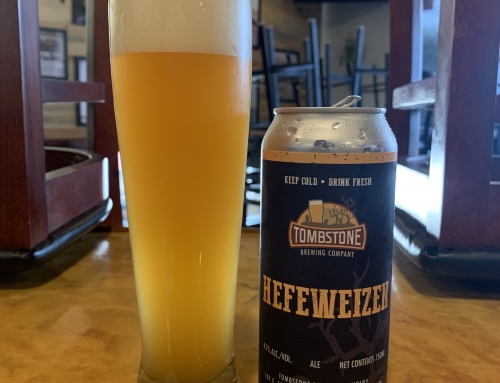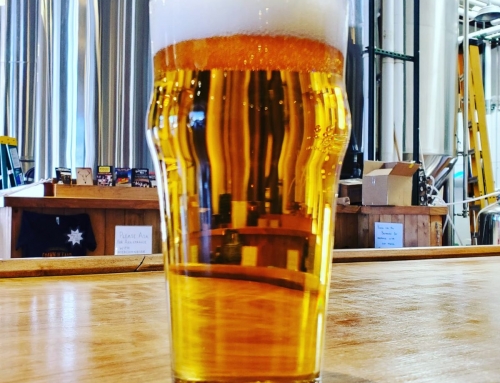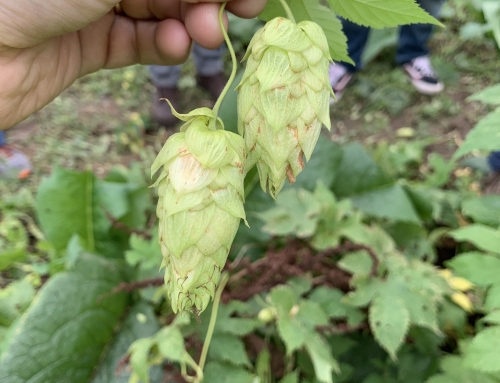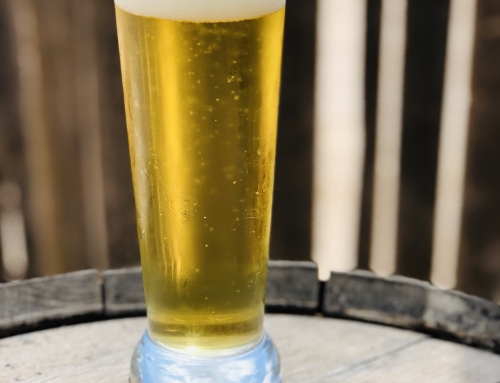Yesterday, we canned the biggest beer (15.5% ABV) I’ve brewed in almost 10 years and with all of our social media posts, I’ve been getting a bunch of questions about it. I realized today that I never did a blog post about it and with a beer like this, it doesn’t do it justice to just release it and not talk about it. This is one of the most insane beers I’ve ever brewed. Somehow, when I get excited about the potential of brewing something like this, I never remember to think about how much the process might suck. Then when I’m miserable I declare I’m never doing it again, only to find myself drinking the beer a few weeks later and thinking about how I can’t wait to brew another beer in a similar manner… It’s a vicious cycle that has resulted in my desire to increase our wet hop and fresh hop beer production every year, and now has resulted in me wanting to further explore the technique that made this beer possible: Reiterated Mashing.
Many homebrewers that brew with the “Brew in a Bag” technique are familiar with the concept of reiterated mashes. What many people don’t realize though is that this technique is an old one that is rarely practiced commercially anymore. The basic idea is that all brewhouses have a maximum extract yield with a single mash. For most brewers, if they want to brew a higher gravity beer than their brewhouse allows, they add malt extract or sugar to boost the gravity, or they use very long boils to evaporate as much liquid as necessary to concentrate the wort. In our case, we did our normal mash and lauter routine, collecting 500 gallons in our boil kettle. We then took that wort and transferred it from the boil kettle, back to the mash tun, where we mashed a second round of malts.
Brewing with a reiterated mash allowed us to use a little bit of every normal technique for high gravity beers. After the second mash, the wort was so thick with sugar that it formed chocolate syrup like consistency and it was difficult to get it to run through the false bottom of our lauter tun and feed our pump. As a result, these brew days took us 18 hours to brew a single batch. Normally in 16 hours, we can have 3 batches of beer brewed when we’re using our normal brewing techniques. With all that extra time that it took to do our second mash, we were able to boil down about 100 gallons of wort in our kettle to 50 gallons which concentrated the flavors of the malts from the first batch.
Brewing this beer was definitely a challenge and formulating the recipe was almost as challenging as the physicality of the brew day itself. A big problem exists when trying to brew this way in that in addition to doubling the amount of potential fermentable sugars, you also double the amount of long chain, unfermentable sugars. While we want a big imperial stout like this to be thick and chewy, without some form of simple sugar added, this beer would be perceived as being extremely unbalanced with intensely crude malt flavors. To help dry the beer out a little bit, I didn’t want to add simple sugars like sucrose or candi sugar. I wanted a form of sugar that would add flavor while also helping to shift the balance of the beer towards a more dry character. As a result, we used 660 lbs of Vermont Maple Syrup using late harvest sap concentrated to make a very dark, robust maple syrup. The goal was never to make a beer that tastes like maple syrup beer, but rather to use a form of sugar that would provide flavors that would meld with the malts and provide balance. The flavor influence of the maple syrup is not distinguishable as maple syrup, but rather it provides a mildly nutty flavor compound as part of the complexity of this imperial stout.
Beyond the brew day itself, brewing a beer this big is a challenge for the yeast too. We take a lot of pride in being able to brew beers free of the burning fusel alcohol character that is present in almost every extreme beer available. In order to make a beer this strong, you will inevitably end up with some fusel alcohol character, but frequently, I find beers like this to be undrinkable because of the burning sensation. To avoid that, we used a yeast strain that is known to handle higher alcohol levels, propagated a large amount of yeast from a small pitch so that we were using a pure, first generation culture, fed it with yeast nutrient, and kept our aeration rates relatively low to keep the fusel alcohol production to a minimum.
The result of using these somewhat extreme techniques is a deceptively strong Imperial Stout since it does not have the burning alcohol sensation that you might expect. Instead it is rich, chocolaty, creamy, and thick, but proceed with caution as the elevated alcohol content may take you by surprise. In fact, if you drink two cans of this beer, it gets gradually more difficult to write a coherent blog post and it takes 2-3x longer than normal… Don’t ask me how I know.





Great post, Weedy! Can’t wait to try this beast! 🍻
Had the good fortune of visiting the brewery while in Tuscon for the week. The Russian Imperial Stout was outstanding! The time amd effort that went into formulatimg and brewing it will hopefully lead you down the path to producing more dark and stout beers. Enjoyed speaking with Jon about your brewery story and he’s clearly passionate about what you folks are doing. Just disappointed I won’t find your beers in the Seattle area.